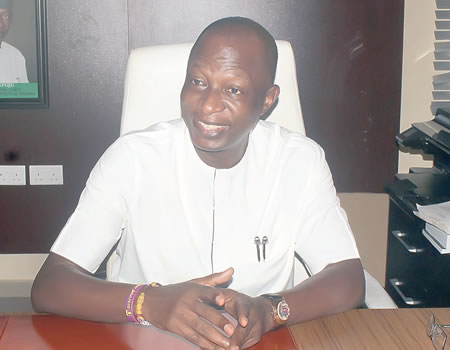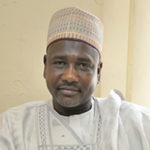Sometime last year, at the United Nations General Assembly meeting, President Muhammadu Buhari made a pledge that Nigeria would plant 25 million trees. Acting on the mandate via the Federal Ministry of Environment, the Director-General of Forestry Research Institute of Nigeria (FRIN), Professor AdesholaAdepoju, explains how FRIN plans to raise 13 million of the needed seedlings this year, the significance of the mandate, among other issues concerning Nigeria oldest research institute, in this interview with PAUL OMOROGBE.
WHAT do we expect from FRIN in 2020?
We had so many ambitious activities we lined up last year, and to a great extent we were able to accomplish as many as we outlined, though it was quite tough. Now, we have additional responsibilities, there are more international dimensions to our work, and more expectations from us. The more people know about this place, the more the demand and the expectations on what we should be doing – such as the number of communities we are expected to be interfacing with has increased. Those are the kind of issues that have come in.
More importantly this year, we will be hosting the world, in the area of ‘man and biosphere.’ These are biodiversity issues, but in the framework of that programme, it is basically how man interfaces with the natural environment, cohabits happily without depleting the biodiversity, and without the biodiversity being injurious to man – and maintaining these two sustainably. So, that meeting comes up in Abuja, June 22 to 26. Participants expected at that programme are about 450 from all over the world. Being the secretariat, we are the hosts. That is one major activity for the year.
Another mandate that has been added to us is this: recall that on September 23, 2019, the President made a pledge at the United Nations that the country would plant 25 million seedlings, and we never allowed that tempo go down. The moment he returned, after interfacing, the ministers of environment gave us the marching order. Promptly, they instituted the committee to ensure the implementation of that pledge being mindful that the President has to report on it come September/October 2020 in UNGA in New York.
So, if you walk through the compound in FRIN, you’ll barely find space to put your feet. You’ll find that everywhere, there are seedlings. This is because FRIN is raising about 13 million seedlings; Great Green Wall is raising about seven million seedlings, and other sister agencies are raising theirs based on their capability and capacity. Twenty-five million seedlings is not the target. By our interpretation of Mr President’s statement, we believe he said that Nigeria will plant a minimum of 25 million seedlings this year, amounting to about 23,000 hectares. If you add that to barley five million hectares of tree cover that the country has now, we will have something close to 5.03 million hectares. That is in no way a small achievement.
Implications of the mandate
But it does not stop at planting this year. If you plant this year, that particular planting needs to be nurtured minimally three to four years. Believing that we are still going to plant more next year, that also will enjoy three to four years of tendering. If that continues, and you plant three years consecutively, it then means everybody related to forestry will be busy working for the next 10 years. That will keep the sector busy. That will increase the biodiversity hub of the country. That will also regenerate so many degraded lands. By derived implication, it will reduce flooding, because it will slow down the runoff of rainwater.
And so, there will so many multiplied effects because the youth and women will be engaged because we don’t have the manpower to plant it (seedlings) all. We will require hundreds of thousands to plant these seedlings, after which two at least will be engaged per hectare. I am telling you that we are planting 22 to 23,000 hectares. If you do the math, you can imagine how many youth will be engaged and busy. So, that will indirectly address the restlessness of the youth who are idle and vulnerable to those who could hijack them for social vices and all that. That will ultimately reduce security issues in the country, and also help the country in terms of GDP because some of these trees we’ll plant are expected to make their impact within five years in terms of how much carbon they are able to sequestrate or sink. Once they are established it (the plantations) will be a place where the you will have one thing or the other to do; that will have a social contribution. And for those (trees) that are fruit bearing, for the communities that house them, there’ll be people who will find those fruits useful for one economic activity or the other. While the medicinal trees will have one use or the other for herbal therapy.
So, these are the tasks before us. I don’t find them as problem, I find as a challenge. My principals are constantly on us, checking on us to ensure that we are working based on the work-plan that we have submitted to them.
Is there room for collaboration?
In the wisdom of the environment minister, there is an expanded committee. You’ll be shocked that even the director-general of National Orientation Agency (NOA) is part of us, almost all of the relevant agencies are part of the committee. The ministry of youth, ministry of women, national security advisers’ office, Nigeria Police, ministry of defence, NYSC, education ministry, labour; it is not just an environment issue. We are only taking the lead. It is an inter-ministerial assignment.
What kind of tree species are you planting?
They are mostly indigenous tree species.
Where exactly are the seedlings expected to be established?
They are to cover the entire country. As a matter of fact, I know our minister is slating a meeting with the governors forum where he wants to interface with them. Though we have states that have already volunteered land to us, even before the pledge, so it (the meeting) is just to escalate the collaboration with them. I know by the time the minister meets with the governors, we will be able to get further directives on what to do and which state has given what for us to work with.
Some environment activists have said that forests can only be conserved and not planted. What do you say to this?
It is obvious the person does not understand the profession well enough. There are three different approaches you can look it. Let’s leave it at natural, artificial and plantation. Plantations can be homogenous or heterogeneous. What is a forest? In a forest you have tree canopy and there is undergrowth, you have the flora and fauna component. But it all starts by trees coming together and other living organisms begin to exist within it. Animals find their way into forests. You can have artificial forest, which exists in most parts of the world. You can create artificial forests.
What we are talking about is not really all about forests. Everybody knows that trees sink carbon dioxide, be it in a natural forest, artificial forest or a plantation. All we are looking for is green cover. Not grass, but trees that we call forest cover that will sustainably sink carbon. In dry period, in wet period, it’s just there. So be it plantation, be it artificial forest, be it a natural forest, all we are after is planting up the exposed part of the earth, so that at least undergrowth can come up. And in the near future, if you are not told that this place was planted up, you will take it for a forest.






